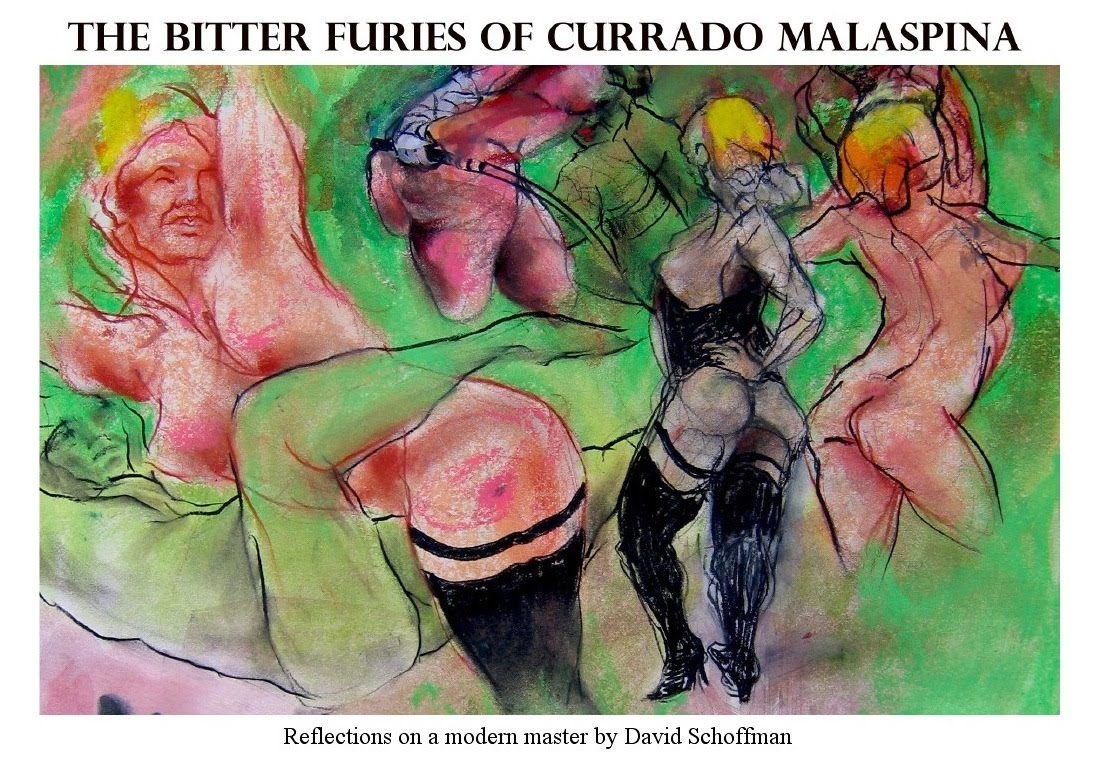The Windward Correctional Center, fourteen miles east of Blieblerville, Texas on Highway 159 is a long way from the Pyrénées-
 |
| Malaspina standing in front of one of his portraits of Lanier Christian Smith, 2012 |
Lanier Christian Smith was a drifter, a drunk and an inveterate liar but one thing he was not was a cold-blooded murderer. And yet on March 21st, 2012, strapped to a pale grey gurney he was treated to an intravenous cocktail of pancuronium bromide and potassium chloride and paid the ultimate price.
Currado got to know Smith the same way he became acquainted with half a dozen other convicted murders - drawing his portrait.
Some people have described Portraits of the Damned as the most odious, rank and repugnant exercise in artistic exploitation since King Ferdinand II of Aragon hired Antonio Dufréy to paint heretics burning at the stake. Others see Malaspina as a modern day Goya, giving visual voice to the silent horrors of state sponsored violence and corruption.
I see it as a pretentious hustle but in this day and age the margin between stunt and the sublime is narrowly ambiguous.
Between May of 2007 and April 2012 Currado Malaspina went to South Dakota, Ohio, Texas and Pennsylvania visiting over twenty maximum security prisons in order to draw condemned men and women. The works were ultimately exhibited in Paris at the Musée de la Peine on Rue St.-Louis en l’Île under the Dantesque title "Visages des damnés."
He is back in Texas for a memorial service for L. C. Smith, as well as for a book signing promoting a small art house publication about the works called The Faces of Fate.


